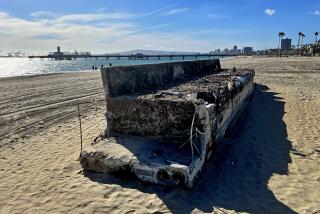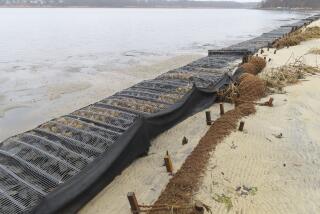Cobblestones Just Keep Rolling Along
- Share via
The cobblestones that have engulfed a number of North County beaches are remarkably mobile. Sometimes, they make a muffled noise as they roll along.
Marine geologist Gerry Kuhn said the stones have journeyed from riverbed to ocean to beach.
“People used to think that the cobbles were buried beneath the sand, but we’ve been able to trace them to the rivers,” he said.
Cobbles washed down the rivers from as far inland as the Pala Indian Reservation during flooding that occurred earlier in this century and in previous ones, he said. The water carried them out to sea, and they eventually returned to shore.
Swells move the stones toward shore when there is little or no sand to keep them at bay.
Just as marbles move easily over a hardwood floor but not carpet, the beach cobbles move more easily over exposed bedrock and reef than they do over sand.
Although they are beloved by rock hounds, the cobbles are difficult to walk on and are credited with undercutting coastal bluffs.
When piled up against the base of the cliffs and tossed by the waves, the cobbles act as abrasive tools against the sandstone. The late Francis Shepard, a noted marine geologist at Scripps Institute of Oceanography, described the cobbles as “like little teeth that eat away at the cliffs.”
More to Read
Sign up for Essential California
The most important California stories and recommendations in your inbox every morning.
You may occasionally receive promotional content from the Los Angeles Times.













